
Product catalog: 7 issues solved by a PXM
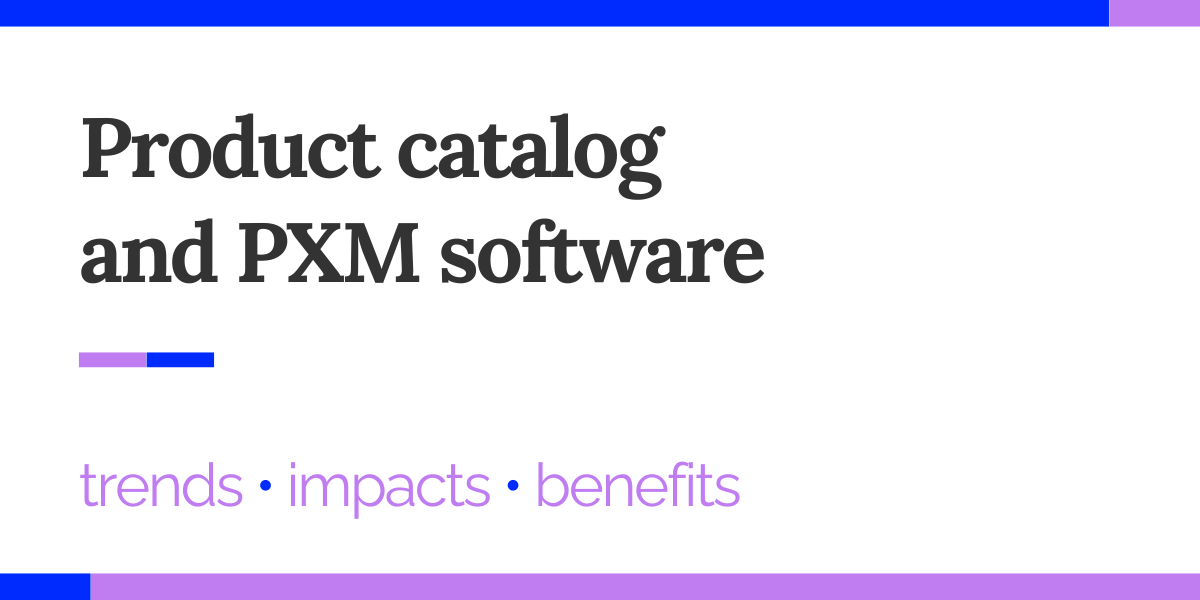
The product catalog is a tool that is as essential to selling as it is onerous to produce and update, especially for businesses that sell online.
A PXM software is an indispensable ally in zeroing in on operations and amplifying the benefits that come from the flow of creating, publishing and updating the product catalog.
In this article you will find out how.
Product catalog: what it is by now we all know just that
You certainly don’t have to be a salesperson, marketer or e-commerce manager to know that a product catalog is a neat collection of photos and information about a company’s assortment.
A catalog may include all or part of products, have a limited duration (as in the case of fashion and its seasons), target exclusive markets, or be intended for multiple channels.
It is this latter aspect that we will focus on most in this article.
Catalog management in the omnichannel era
We don’t want to repeat the spiel you’ve probably read everywhere by now, but it’s the truth: digital has revolutionized purchasing processes and, by extension, catalog management.
As a result, when it comes to product catalogs, the spotlights are almost always on the content of site, e-commerce and marketplace pages, which require massive levels of instantaneity and consistency that, without proper support, result in a lot of manual labor.
Automated catalog: present and future go through here
The heterogeneity and large number of communication and sales channels have high operational costs and probability of error in the catalog production flow, favoring the growth of PXM software.
Not surprisingly, the market for Product eXperience Management, solutions that help companies deliver an omnichannel product experience to customers, is estimated to be growing at a compound average annual rate of 18.2 percent and an estimated value of 6.3 billion in 2028.
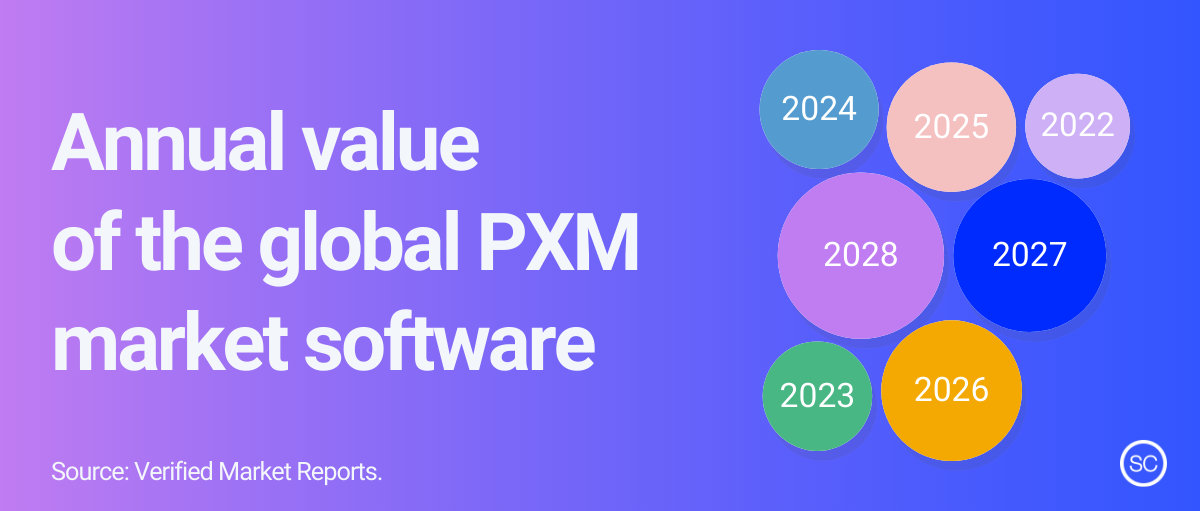
Among the main benefits of a PXM platform is the reduction of operational work, guaranteed by the automatic publication of the catalog and related product sheets. But there is much more.
In the following paragraphs we will explore 7 problems that can be solved with an automated catalog.
#1 Stop copy-pasting Master Data
Master Data (or Master Data) is so-called product master information and typically resides in enterprise management systems such as ERP software.
Some Master Data flow directly into the product sheets: this is the case, for example, with the product code (such as EAN). Others, however, must be adapted depending on the publication channel.
This is the case with size: if the company sells online in different geographic markets, the size of the same item will vary depending on the country for which the product sheet is intended. In the absence of digitization, manual labor and the risks of error, with wide and deep assortments, rise.
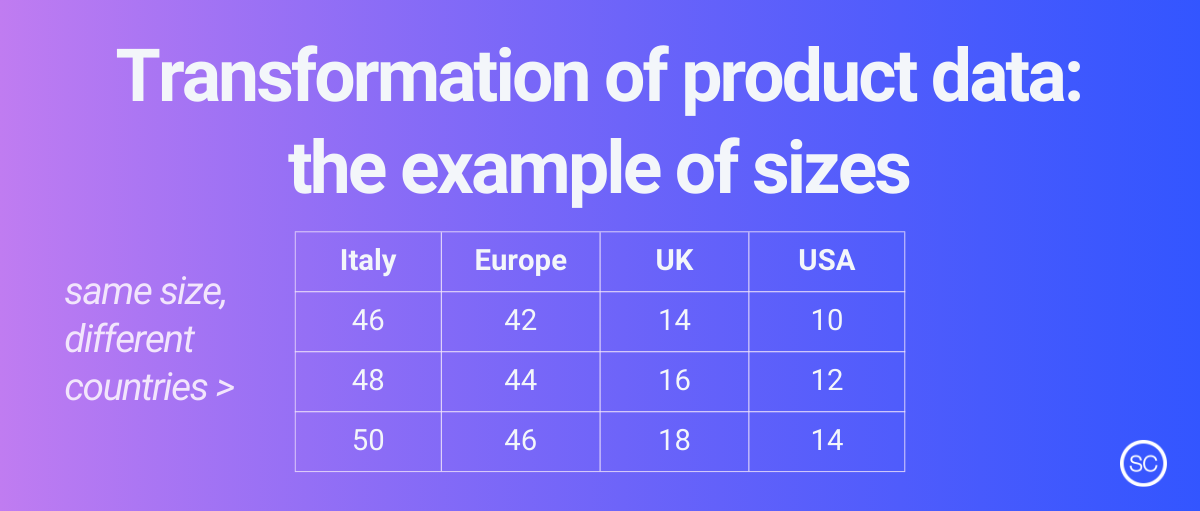
Solutions such as a PXM with which to automate product uploads facilitate Master Data management because they automatically populate e-commerce and marketplaces with data streams from ERP, delivering them directly or transforming them.
Transformations are made possible by rules, by which the most advanced PXM tools allow the same data item to automatically take on different values based on the catalog for which it is intended.
#2 The creation of Editorial Data accelerates
The flow of creating a product catalog is not limited to flowing downstream Master Data from the ERP but also includes planning, writing and distributing Editorial Data.
While Master Data is informative in scope, Editorial Data is more commercial in nature, as it promotes product storytelling.
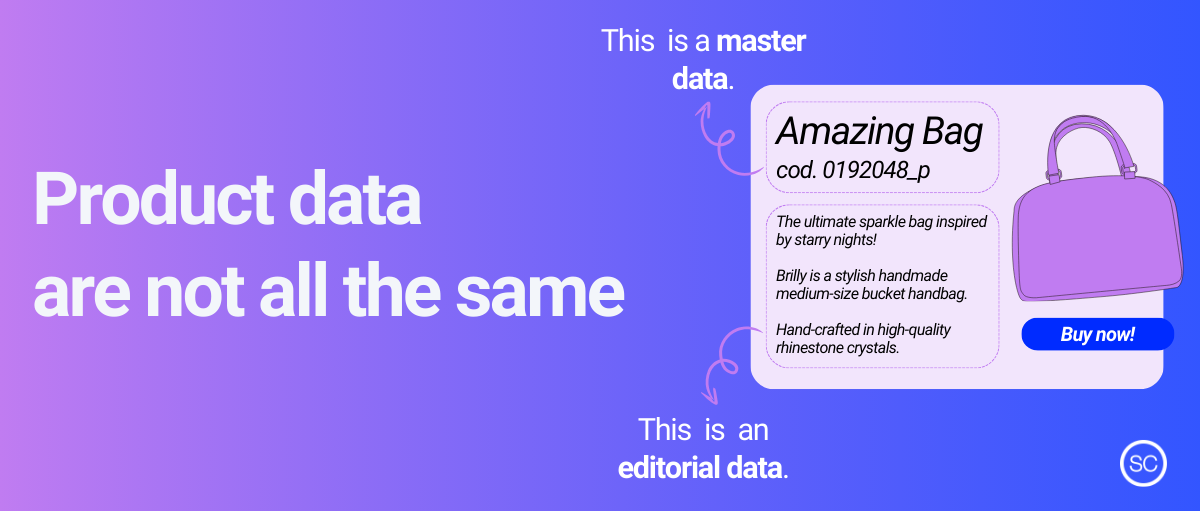
Copywriters and translators-even from ERP data-enrich existing information and generate new information, such as marketing descriptions. Creative flows that, with manual management, occur in a fragmented way and with inefficient replication for each channel and catalog.
With PXM software, the development of Editorial Data accelerates because it gives the various teams a single workspace in which they can plan their various activities and say goodbye to Excel spreadsheets.
In addition, thanks to the rules already mentioned, it is possible to pre-populate some fields with data combos found on tools such as ERP or PLM to make the work of language and word experts more agile.
3. No more hours thrown into categorizing products on each channel
Categories are valuable guides to the customer experience.
However, they risk increasing time to market, especially in companies that are not very digitally structured and have many products to promote in different sales channels.
The same item, in fact, might be categorized differently on different catalogs, depending on the structure of the various marketplaces or on brand choices; in fact, among our clients‘ e-commerce, there are realities that differentiate categories depending on thegeographical area of reference.

A PXM solution, thanks to configurable rule engines, zeroes out the time spent (or lost) categorizing products.
Having established the trees of the various catalogs, for example, the most powerful tools automatically assign items to the various catalogs (and their categories) based on the value of one or more product data.
4. Cross-selling and up-selling take off
An automated catalog does more than just reduce promotional costs and time.
By digitizing the creative flow as you can with PXM software, in fact, you can leverage rule engines and automatically associate multiple products with each other, creating bundles of items or purchase suggestions featured on site and marketplace pages to elevate the average shopping cart.
5. No more delayed campaigns
The introduction of a Product eXperience Management solution also impacts collaboration between even very different teams. Customers who have chosen SeeCommerce, for example, leverage its Attribute Planning to schedule workflows.
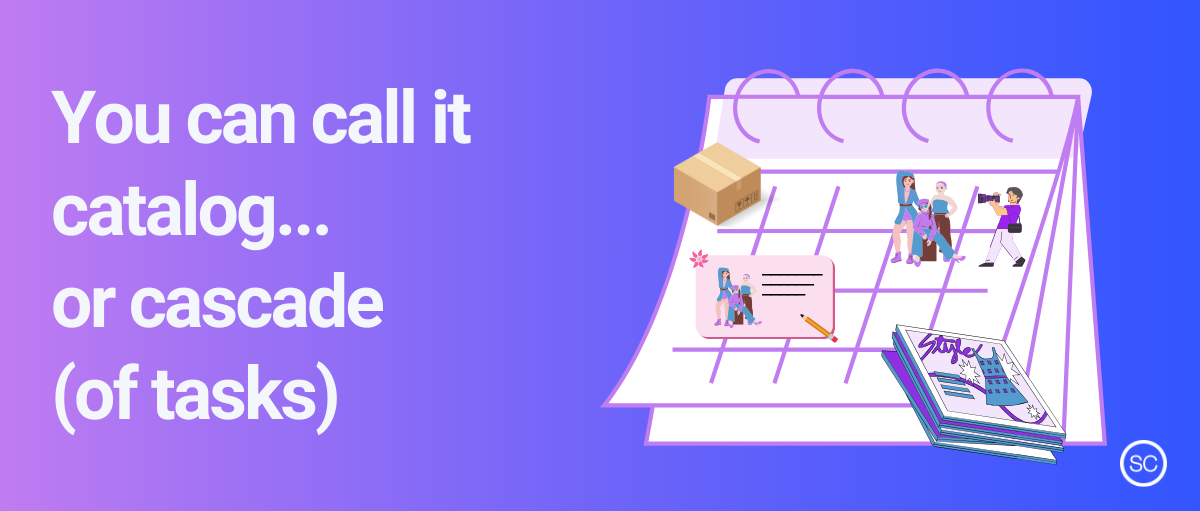
To give an example, for each catalog it is possible to set the dates for photo shoots (aligned with the logistical flows involving the physical arrival of the products) and, cascadingly, those for post-production activities, copy enrichment and, finally, catalog publication.
The main benefit of scheduling activities is to avert misalignments between departments and delays along the process, the main cause of slowed market launches, with what that does to the business.
6. Populating views becomes a breeze
So far we have talked largely about data but the other half of the apple, indeed, of a product sheet is undoubtedly photos, videos, documents–in a word: media (or digital assets).
Front, back, still-life: the views of a single product are numerous, and often a shot will vary in size, format, or background color depending on the target catalog.
A PXM solution also optimizes this flow, which, done manually, requires intensive editing activities, by automatically optimizing the specifications of a media.
Another major time benefit is provided by automated product-content association. SeeCommerce, to do this, leverages the naming convention; the system is instructed to recognize file nomenclatures and instantly associate them with a specific product.
This makes it possible to retrieve, at the search stage, not only all the information in an article, but also the digital assets that represent it. Without the need for any manual activity.
7. The demise of misaligned catalogs
Last but not least: updating. How many times does it take to touch up that data, remove that one too many line spacing, update that inaccurate shot? Let’s answer together: too many!
A PXM software also takes care of this aspect, which, moreover, is essential to be able to speak for real about automatic publication of product sheets.
With SeeCommerce PXM, you don’t need to access the back-end systems of e-commerce or portals to update a piece of information or content, because the tool integrates with your end channels and distributes the most up-to-date version of data and media to the front ends of your digital storefronts in real time.
Articles like this once a month in your e-mail
GEA is our zero spam newsletter that puts your thoughts on digital, e-commerce and PXM in order. Sign up to receive the perfect set of data, trends and insights for the future every month.